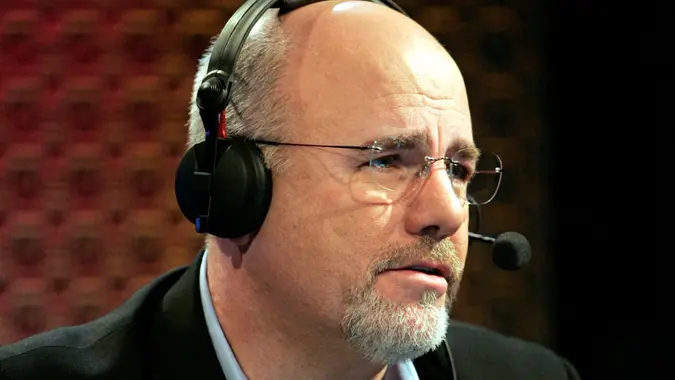8 Ways Retailers Get You To Spend More During the Holidays

Commitment to Our Readers
GOBankingRates' editorial team is committed to bringing you unbiased reviews and information. We use data-driven methodologies to evaluate financial products and services - our reviews and ratings are not influenced by advertisers. You can read more about our editorial guidelines and our products and services review methodology.

20 Years
Helping You Live Richer

Reviewed
by Experts

Trusted by
Millions of Readers
The average American shopper is expected to spend just over $1,000 on gifts during the 2025 holiday shopping season, according to Gallup, but how about you? Chances are you’ll feel a sense of urgency to take advantage of sales as prices continue to rise thanks to some tinseled-in tariffs, but that’s not all you’ll have to battle with your budget.
Be aware that retail stores also have all sorts of marketing tricks to get you to spend more. To shop smart, you need to know their tactics to help you avoid impulse purchases or buy-now-pay-later ploys. From soothing music to bulk pricing, here are eight retailer tricks to look out for so you can save money this holiday season.
1. They Play Relaxing Music
People who hear classical music while shopping might be expected to spend more money than they planned because the genre is connected to the perception of affluence. This tactic is used more frequently during the holiday season, and you can hear it pumping through the speakers of every brick-and-mortar store around the time Black Friday kicks off.
If a crying baby and crowded theater can get you to bow out of a movie, chances are you won’t enjoy venturing to a crowded mall for your holiday shopping — or spend very long in stores. Queue the calming music.
2. They Use Warming Scents
Retailers also use holiday-specific scents to try to increase your willingness to spend money. Try to be stronger than your sense of smell and put your credit card back in your wallet, even if it’s an alluring seasonal odor like pine, gingerbread, cinnamon or vanilla.
Similar to Christmas music, these scents invoke a sense of warmth and generosity, all leading to larger holiday purchases. Be careful, as your nose is linked to nostalgia, and this tactic is used by retailers and can be especially effective when the scent complements the classical or soothing music being played.
Sensory experiences can play a large role in your perception of a store and brand. The more pleasant the shopping experience, the more likely you’ll walk out the door with less money in your hand.
3. They Make You Nostalgic
Likewise, retailers frequently sell items that appeal to people’s feelings of nostalgia, such as a ’50s-style dining set, an old-school video game system or a retro turntable. Gifts that trigger a memory or inspire a young person to try something from the past can offer richness that general gifts like candles cannot.
Talk about a limited-time offer, as these feelings of nostalgia seem to have a significant impact on the spending behaviors of holiday shoppers who are wistful for their own childhood Christmases.
4. They Offer Bulk Pricing
You might be accustomed to seeing two-for-one deals, but you can expect even more of them — and larger bulk offers — during the holidays. Move over Costco and Sam’s Club, because grocery stores in particular use this tactic frequently, such as by offering 10 items for $10, making you think you have to buy 10 to get the $1-per-item deal.
Look closely, though — if you want to shop smart, you can usually get the deal price regardless of how many items you buy.
5. They Use the Number 9
While shoppers are accustomed to the majority of retail items going for prices such as $39.99 instead of $40, not many shoppers stop to think about why merchandise is priced this way. Not using round numbers is another trick intended to make you spend more, or at least make you think you are saving more.
This pricing structure is not holiday-specific and won’t change anytime soon, but customers should just remind themselves that while $39.99 looks cheaper than $40, it’s only a 1-cent difference.
6. They Put More Profitable Items at Eye Level
Stores often put items with the best price margins at eye level so you see them easily. Items that are better buys for the customer — and therefore not as profitable for the retailer — are more likely to be found at the bottom or top of aisles.
Simply put, retailers keep items they want to move in the valuable real estate that is eye level.
7. They Sell You Gift Sets
Head into a place like Bath & Body Works or Williams-Sonoma, and you’ll find plenty of gift sets, whether it’s a set of lotion, body wash and perfume, or a barbecue essentials kit. These gift sets even come in nice packaging, which means you have a beautiful-looking gift ready to go.
Gift sets seem like a great deal because the advertised value of all items priced together is typically lower than if you were to buy them separately. The stated value of the set, however, is the full retail price of all items in it. So, it can sometimes be cheaper to buy the items separately if they are on sale. Buying gift sets also can lead to overspending, which will undermine your plans to shop smart.
8. They Make Finding Clearance Items Hard
Clearance racks or shelves are often located all the way in the back of the store or are hidden as much as possible because retailers want holiday shoppers to have to walk through the entire store to get to them, according to Business Insider. By walking through the store, you’re more likely to see higher-priced items first, which you might end up buying.
Once you do find the clearance section, it is purposefully organized in a state of disarray, often mixed with other, more expensive items that are not on sale. True bargain shoppers don’t mind sifting through the mess to find the great deals, but the average shopper is more likely to be turned off by the obstacle and instead buy non-clearance items, letting the retailer win.
Caroline Hailey contributed to the reporting for this article.
 Written by
Written by  Edited by
Edited by 

























